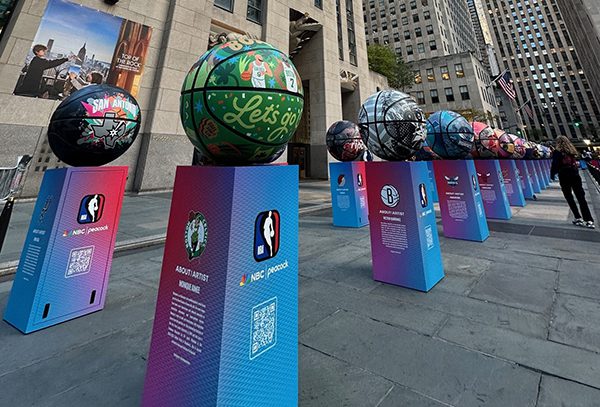It’s the first major accounting change to affect sales and marketing in years. It took effect Jan. 1. And some brand managers still don’t even know about it.
Three years after it began investigating how booming dot-com companies were writing off massive marketing expenditures, the Financial Accounting Standards Board’s Emerging Issues Task Force (EITF), Norwalk, CT, last spring approved new rules for the way manufacturers report “any consideration” paid to resellers (July 2001 PROMO).
The FASB’s “abstracts” were thick packets of instructions steeped in jargon and filled with reams of long-winded explanations that only the most diligent accountant could sift through.
The procedures require companies to reclassify much of the trade spending that has always been considered marketing expenses as reductions in revenues. Below-the-line practices — promotion — now come right out of the top line.
The rules were later adopted by the Washington, D.C.-based Securities and Exchange Commission and became “generally accepted accounting practices” in the first quarter of 2002. Corporate accounting departments were quick to adjust to the new reporting requirements, and began restating financials to accommodate them.
But corporate marketing departments haven’t been so quick to catch on, even though these new standards will ultimately have a major impact on sales and marketing planning, execution, and measurement.
“I’m not sure brand managers have much recognition or appreciation for this,” says Don Stuart, partner with Cannondale Associates, Wilton, CT. “But make no mistake. This is important.”
The Low-Down
The three primary rule changes affecting marketing activity devised by the FASB’s task force are:
EITF 00-14: Addresses the recognition, measurement, and reclassification of “sales incentives voluntarily offered by manufacturers without charge.” Those include bill-backs from invoice allowances, buy-downs, free-product deals, rebate and coupon costs, and price reductions. All these expenses must now be subtracted from sales totals.
EITF 00-25: Covers “vendor income statement characterization of consideration paid to a reseller.” In English, that’s payment for slotting, co-op advertising, or price reimbursements.
EITF 00-22: Reclassifies expenses derived from point-based loyalty programs and volume-based incentives.
These new standards could have a drastic effect on the revenues of many companies — especially CPGs. Think of the impact alone on product launches, which typically are backed in large part by a boat-load of retailer incentives to drive initial awareness and volume. And airlines could be particularly affected by the new reporting for points programs.
Some expenses considered to be consumer promotion shift as well — retailer allocations for coupon redemption, for instance. However, the “placement and distribution expenses” related to a coupon program, such as the costs of running an FSI, remain expenses. Most media spending likewise remains an expense — with the notable exception of co-op advertising dollars.
The impact is already being seen in the marketplace. As quarterly statements are released, public companies are restating sales figures — as far back as 10 years — and offering a better idea of what they’ve been spending on promotion. Kraft Foods, for example, reduced its previously reported 2001 sales total of $33.9 billion by $4.6 billion, according to the company’s annual report. (The changes won’t be as obvious in other cases, says Stuart. Procter & Gamble, for one, had already been parsing its revenue figures out in preparation.)
Not every promotion tactic will result in a net sales decrease, however. New York City-based Estée Lauder, for instance, restated its 2001 revenues a few percentage points higher due to the effect the new rules have on gift-with-purchase and purchase-with-purchase offers: The cost of products being given away as incentives — heretofore treated as a sales expense — are now accounted for as sales.
The changes are bound to cause some initial confusion — especially since they open the door to closer scrutiny of marketing practices. This spring, Santa Clara, CA-based Palm, Inc. issued a media release explaining the difference between distributor and consumer rebate programs after one news venue questioned the company’s financial reporting practices.
On a grander scale, the restated figures will provide a more realistic look at recent growth in the packaged goods industry. Cannondale expects revenue growth rates to fall an average of 30 percent after promotion expenses are stripped out.
From 1997 to 2001, for instance, sales grew at an annual compound growth rate of 2.9 percent, while trade promotion grew at 0.9 percent annually. That’s a 31-percent difference if you subtract the latter from the former.
“Manufacturers have been throwing money away to buy volume and juice up net sales,” says Stuart. “They can’t do that anymore. Now, if they throw trade dollars around, sales come down.”
Thus, a marketer putting together a plan with objectives based on unit volume and net sales can now make the volume number but quite easily miss the sales mark because of the program’s costs.
“A lot of revenue growth from the last few years was just pixie dust,” says Stuart. “Marketers now need to figure out how budgets affect the top and the bottom lines — then learn to drive both.”
Meant to Be Broken
The changes could bring about a spike in account-specific programs, P-O-P activity, and out-of-store incentives as soon as next year, says Stuart. And crafty brand managers will no doubt find creative ways to keep some of their spending in the expense line, he adds.
There may be some loopholes to be found. For one, a trade payout can remain an expense if the manufacturer receives an identifiable benefit other than the purchase of product — if a brand manager pays a third party to gain display space in-store (to some future display-space rental company, say). Or, if a manufacturer can estimate the fair market value of a benefit (shelf space, for instance), only the portion of expenses that exceeds that value would have to be reduced from sales.
These are not exactly the widest of loopholes, which is why most trade marketing expenses will end up coming out of sales — at least for the time being.
Bet you wish you had that accounting minor now.




